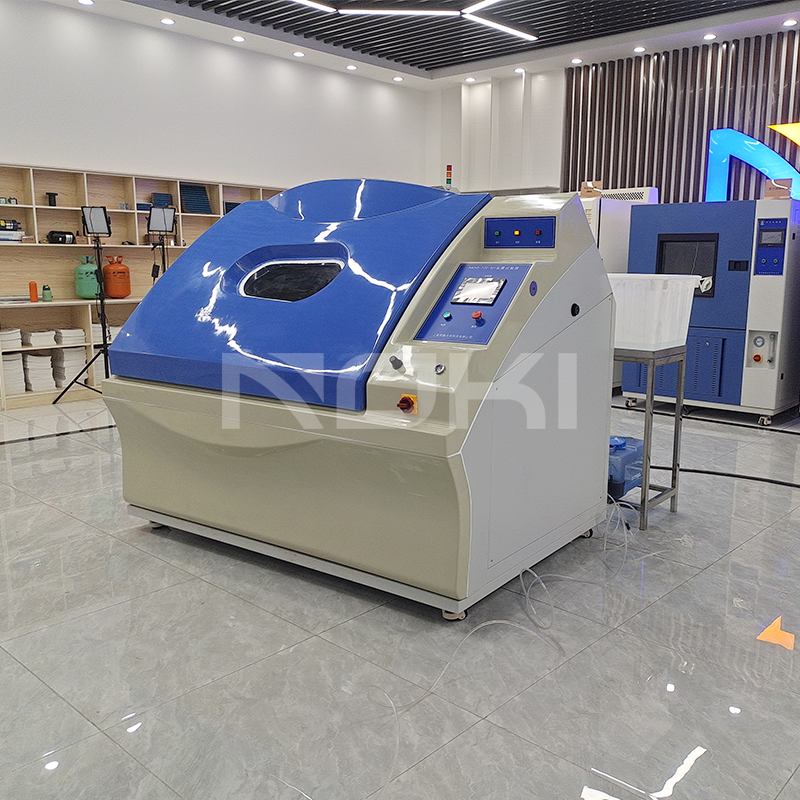Today we are going to understand the role of the salt spray test chamber and the test method of the salt spray test chamber.

Let’s first understand what the salt spray test chamber is?
As the name suggests, the salt spray test chamber is an environmental test equipment with salt and fog.
The salt spray test equipment is a device that people artificially simulate the salt spray environment to test and test the corrosion resistance of metal products.
The test method that has been used for a long time in the salt spray test chamber is: the neutral salt spray test of the metal covering layer, also known as the NSS test. So, let us analyze the standard requirements of the neutral salt spray test.
First: The volume of the experiment chamber. Generally speaking, the chamber body of the experiment chamber should not be less than 0.2m. Generally, it is better to choose more than 0.4m. The shape of the lid on the top of the experiment chamber must be triangular.
In this way, the water droplets formed by the salt spray can be prevented from directly falling on the sample in the experiment, leading to errors in the experimental results.
After confirming the volume, it is the on-site requirement of the salt spray test chamber.
We recommend to isolate the general salt spray test chamber separately.
This can prevent metal products or other equipment near the salt spray test chamber from being corroded by the salt spray test chamber due to long-term placement with the salt spray test chamber.

1. The gas source of the salt spray chamber: The gas source of the salt spray test chamber is necessary.
Because the mist of the salt spray tank is purified by compressed air to remove oil and enter the distilled water, its temperature is humidified by being higher than the saturated barrel in the tank, and the pressure of the clean humidified air source is controlled within the range of 70~170kpa by controlling the pressure valve. Inside.
2 The power supply of the salt spray chamber: The salt spray test chamber generally has a voltage of 220, and it is enough to have a socket.
3. The water source of the salt spray chamber: the solution of the salt spray experiment is prepared by sodium chloride and distilled water in a certain ratio.
This kind of water is best to choose distilled water or deionized water.
Moreover, the pH test paper calibrated by the pH meter is required as a daily check.
The pH value of the solution is generally between 6.5 and 7.2, and the water source of the test can also be adjusted with chemical pure hydrochloric acid or sodium hydroxide.

4. The exhaust port of the salt spray chamber: there is an exhaust pipe behind the salt spray chamber for usual defogging, so the place where the salt spray chamber is placed should leave an exhaust port that can be connected to the exhaust pipe for daily use Salt spray discharge.
After the above places are ready, let’s take a look at the salt spray test chamber: neutral salt spray test:
Second: Prepare the experimental solution: Dissolve chemically pure sodium chloride in distilled water or ionized water with a concentration of 50 ± 5G/L.
Then the electrical connection of the experiment chamber, the water connection, and the air source are ready.
After the above steps are completed, put the sample on the sample rack of the laboratory, add the experimental solution into the solution inlet, and set the experimental temperature.

Normally, the laboratory temperature for neutral salt spray experiment is 35℃±1℃, and the temperature of the saturated barrel is usually 47℃±1℃.
Is the temperature set, the test time is set, and the spray method can be continuous or Intermittent.
Note: The test cannot be interrupted during the specified test period. The test chamber can only be opened when a short period of observation is required.
The test of the predetermined period can be inspected periodically,
but the sample surface cannot be damaged during the inspection.
The time for unpacking inspection Keep it as short as possible.
leave your message